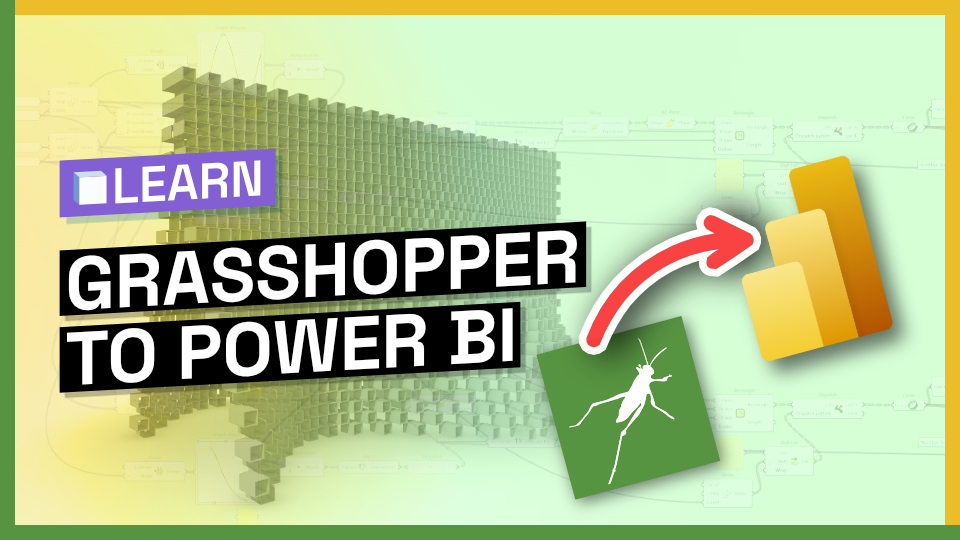Grasshopper to Power BI workflow is powerful and important as it combines Grasshopper's data processing and visual scripting capabilities with Power BI's business intelligence and data visualization tools. Follow along as we demonstrate how to send the Grasshopper model to Speckle, receive it in Power BI, and view it using the 3D Viewer Visual. Let's get started!
Video Tutorial
Step 1: Sending Grasshopper Model to Speckle
Sending from Grasshopper is really easy. Here’s how:
- Search for “Send” node in Grasshopper.
- Connect your Grasshopper geometry to the “Data” input.
- Provide Stream URL input either by creating a new project/model via the web app or selecting an existing project/model.
- Optionally, attach a message by creating a panel with the desired text and connecting it to the "Message" input.
- Click on “Send”.
Step 2: Receiving Grasshopper Data in Power BI
You sent your Grasshopper data in previous step. Now let’s receive it in Power BI:
- In Power BI, click on "Get Data" and search for "Speckle" in the data dialog.
- Choose the appropriate Speckle connector ("Get Stream by URL") and click "Connect."
- Paste the URL of the Speckle model into the connector's prompt and click "OK." This URL should be as same as the URL you sent data to from Grasshopper.
- The Grasshopper data will be loaded into Power BI in a tabular format.
- Click on "Load" to import the data into Power BI.
Step 3: Viewing in 3D within Power BI
Now we are ready to have our Grasshopper model inside Power BI.
- Add the 3D Viewer Visual to your Power BI report.
- Drag and drop the following fields from the received Grasshopper data onto the corresponding inputs of the 3D Viewer Visual:
- Stream URL into the "Stream URL" input
- Commit Object ID into the "Commit Object ID" input
- Object ID into the "Object ID" input
- Once you have connected the inputs, the Grasshopper model will be visible within the 3D Viewer Visual in Power BI.
Keep this in mind: This is not just a viewer. It is an interactive 3D Visual. So you can use it in conjunction with other Power BI visuals to extract and interact with your data in 3D.
Conclusion
In this tutorial, we showed you how to view your Grasshopper data inside Power BI. If you have any questions, feel free to ask them at speckle.community.
Try this tutorial, let us know what you think!


